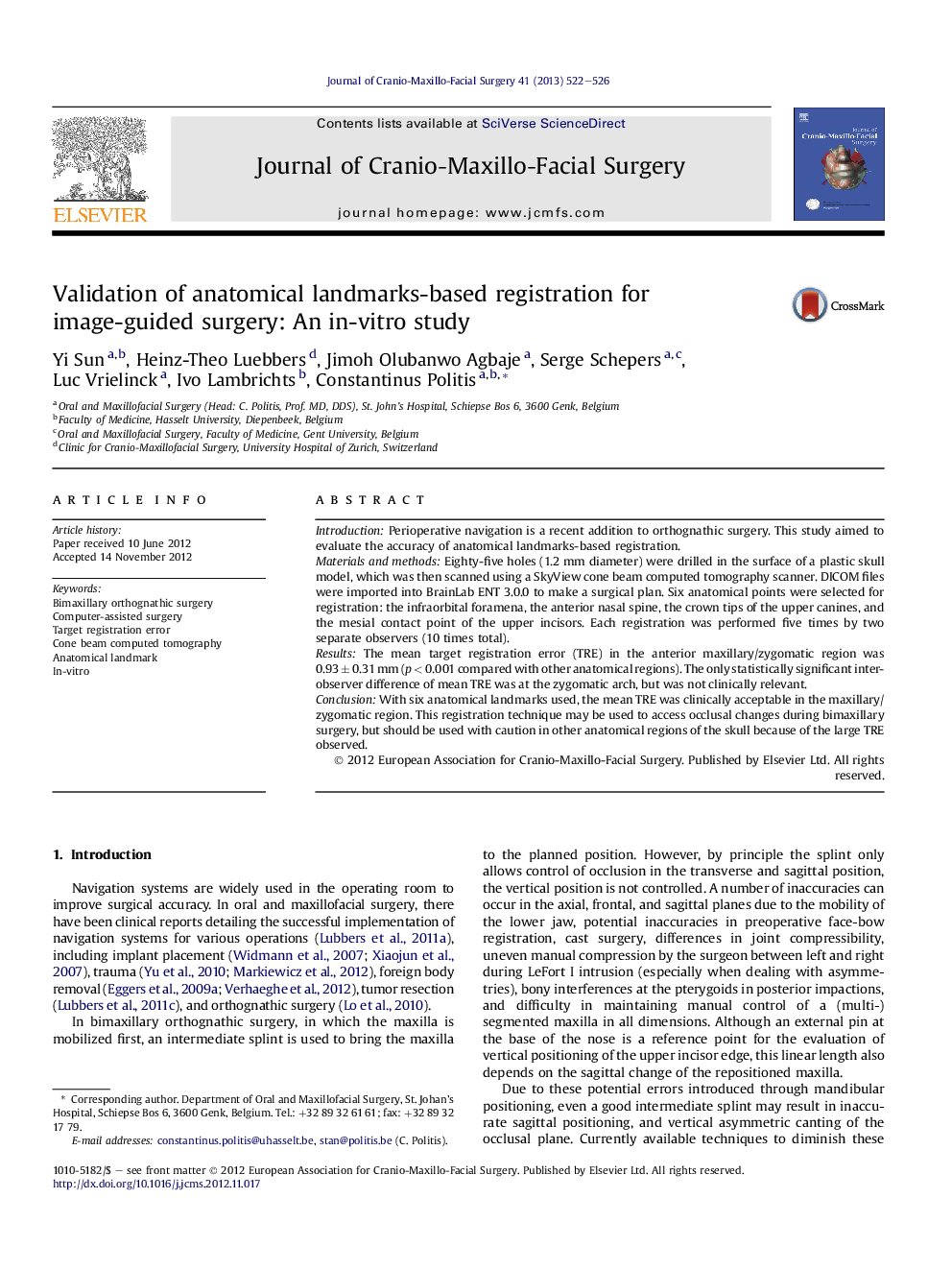| Article ID | Journal | Published Year | Pages | File Type |
|---|---|---|---|---|
| 3143163 | Journal of Cranio-Maxillofacial Surgery | 2013 | 5 Pages |
IntroductionPerioperative navigation is a recent addition to orthognathic surgery. This study aimed to evaluate the accuracy of anatomical landmarks-based registration.Materials and methodsEighty-five holes (1.2 mm diameter) were drilled in the surface of a plastic skull model, which was then scanned using a SkyView cone beam computed tomography scanner. DICOM files were imported into BrainLab ENT 3.0.0 to make a surgical plan. Six anatomical points were selected for registration: the infraorbital foramena, the anterior nasal spine, the crown tips of the upper canines, and the mesial contact point of the upper incisors. Each registration was performed five times by two separate observers (10 times total).ResultsThe mean target registration error (TRE) in the anterior maxillary/zygomatic region was 0.93 ± 0.31 mm (p < 0.001 compared with other anatomical regions). The only statistically significant inter-observer difference of mean TRE was at the zygomatic arch, but was not clinically relevant.ConclusionWith six anatomical landmarks used, the mean TRE was clinically acceptable in the maxillary/zygomatic region. This registration technique may be used to access occlusal changes during bimaxillary surgery, but should be used with caution in other anatomical regions of the skull because of the large TRE observed.
